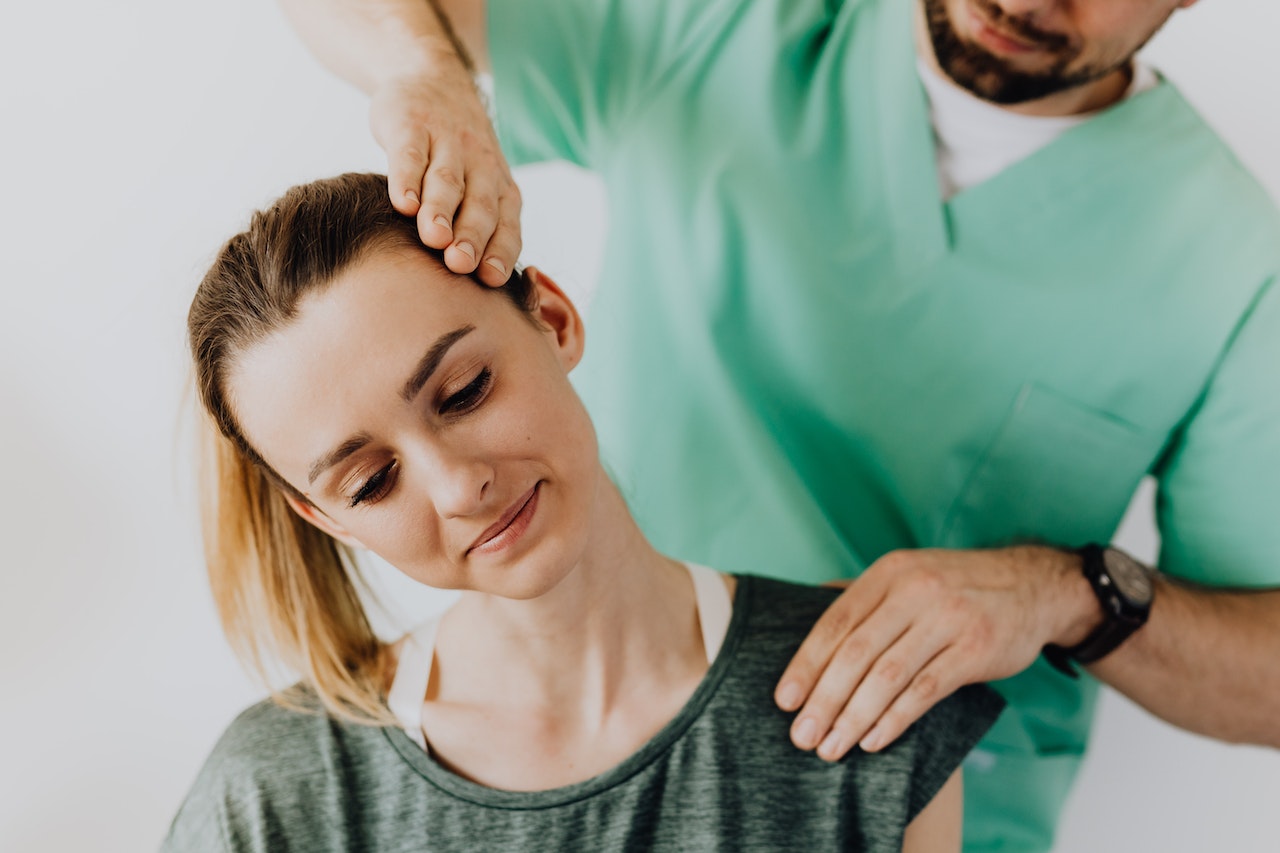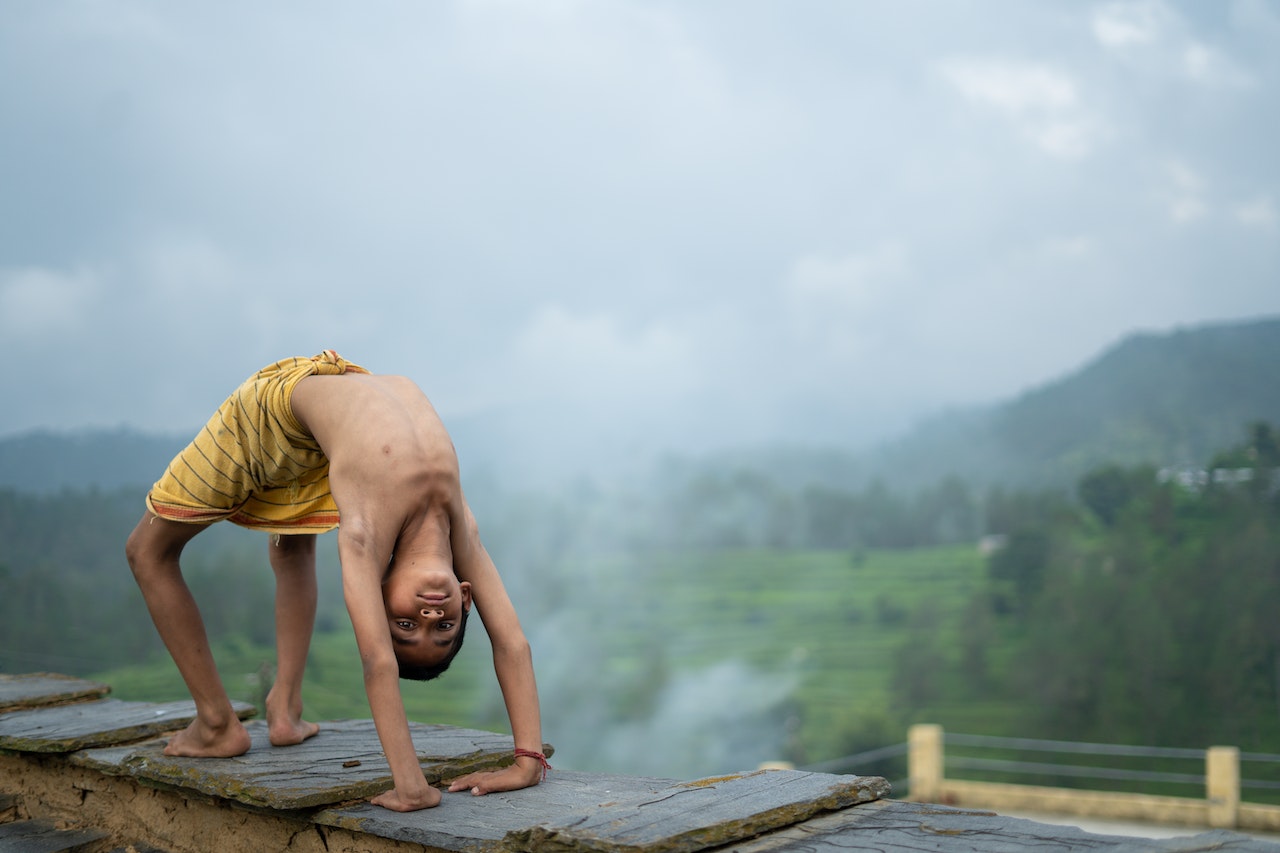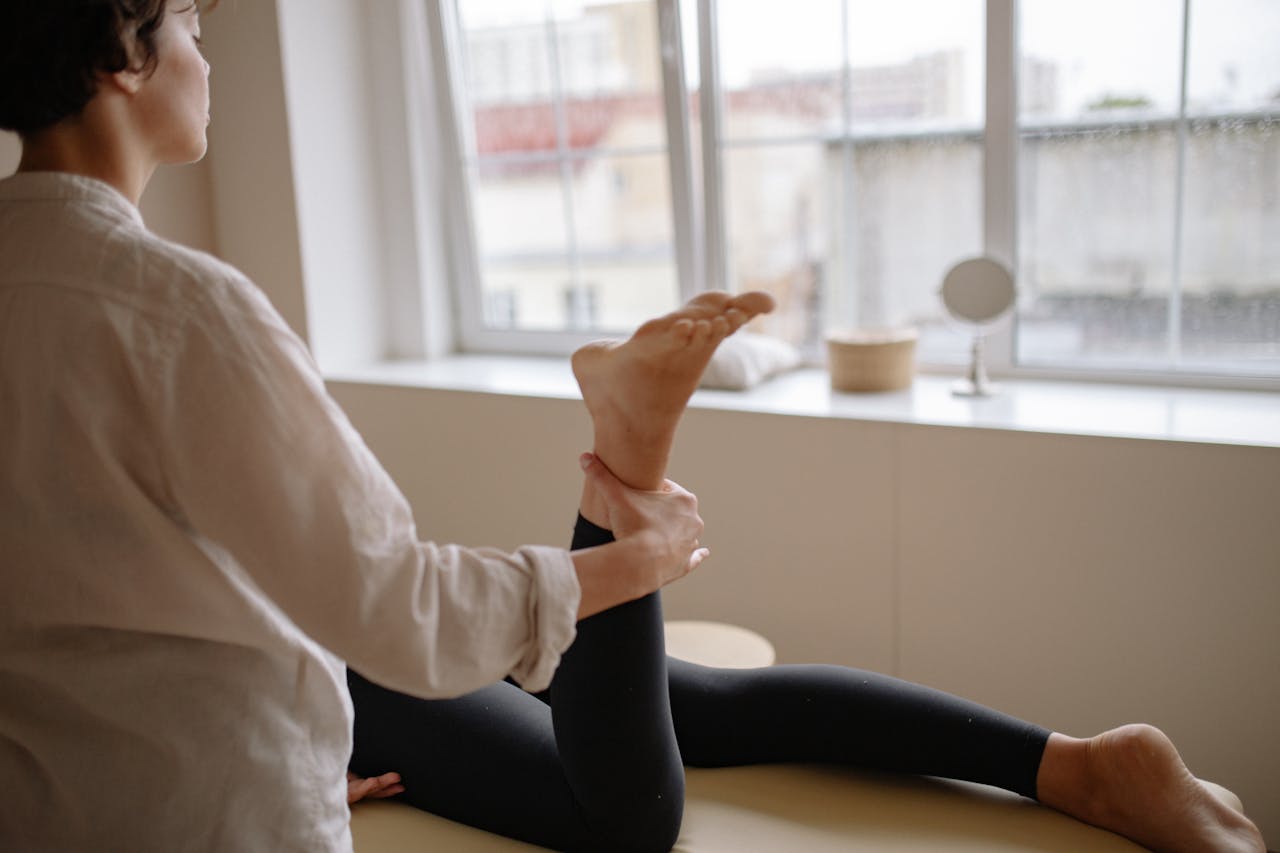What is Vestibular Therapy?
Vestibular rehabilitation is a form of therapy that helps treat balance disorders in people. It includes exercises and activities that stimulate the vestibular system(inner ear) to improve a sense of balance and reduce dizziness. Balance problems are generally caused by damage to the vestibular system either due to a head injury, stroke, tumors in the brainstem or inner ear, diabetes, Lyme disease, or other infections. VRT helps to correct dysfunction of the inner ear and can reduce dizziness, improve coordination, decrease anxiety, and prevent panic attacks resulting from balance issues.

How Can Vestibular Therapy Reduce Dizziness
Though dizziness can be caused by many factors, a common cause of dizziness is damage to the inner ear, which is responsible for balance. The vestibular system includes fluid-filled chambers that detect movement in all directions and send this information to the brain. When there’s a problem with these canals, it can result in vertigo or motion sickness; often both.
The body’s balance system is comprised of the eyes, the ears, the spine, and the brain. Each of these collects critical data about movement, such as acceleration, rotation, or tilt. This data is sent to the brain to be synthesized into information that synchronizes various parts of the body to maintain balance. There are two reflexes that are programmed into the human body for balance correction. The Vestibular-Ocular Reflex aligns vision and head movement through communication between the eyes and the inner ear mechanisms. The Vestibular-Spinal reflex aligns overall body movement and perception of balance through muscle control via the central nervous system and the inner ear.
When the balance system isn’t working properly, our reflexes aren’t fine-tuned enough to keep us steady, grounded, and balanced. VRT addresses dizziness by promoting the human body’s ability to compensate. Compensation is the brain’s way of finding shortcuts to balance. VRT can train the brain to recalibrate the body’s sense of spatial orientation. Brain compensation naturally occurs in healthy individuals. However, vestibular rehabilitation therapy speeds up brain compensation when it is delayed or impaired.
Vestibular Rehabilitation Therapy (or Vestibular Retraining) retrains the body, the brain, the inner ear, and the eyes using specific exercises and equipment to improve communication between them and promote natural compensation. Though there are various treatments that are employed for vestibular rehabilitation, they majorly fall under the following four.
- Balance Training – Often employed as the basis for VRT, balance training focuses on building the strength of the muscles responsible for body balance, including core training. The goal is to improve the stability of the body, thereby increasing confidence in body movements and somatosensory perception.
- Gaze Stabilization – Since the eyes form a crucial part of the balance system, any disparity in the capability of the eyes to focus, adversely impacts the sense of balance. Gaze stabilization aims to correct the unsteady eye by training the eye to focus on one object, while the head, neck, and eyes perform synchronized movements.
- Habituation – To train the body’s internal defenses against dizziness, the body needs to be exposed to these triggers in a controlled environment. With enough repetition, the brain learns to detect dizziness triggers and learns to compensate. This training is called habituation and can be excruciating for the brain in the beginning.
- Canalith Repositioning – Here, displaced calcium crystals in the inner ear mechanisms (otoconia) are physically repositioned by a trained professional in order to alleviate vertigo or dizziness.
Other Conditions Treated with Vestibular Therapy
Though dizziness is the most common symptom, there are many underlying conditions that can be treated with Vestibular Rehabilitation. The most common conditions are
- Meniere’s disease
- Persistent postural perceptual dizziness (PPPD)
- Vestibular migraine
- Perilymph fistulas
- Labyrinthitis
- Positional vertigo (BPPV)
- Vestibular dysfunction resulting from stroke
- Cervicogenic dizziness
- Unilateral vestibular hypofunction
- Acoustic neuroma
- Mal de Debarquement syndrome
Benefits of Vestibular Therapy

Vestibular Therapy teaches the brain to use its eyes and ears together. Vestibular therapists help their patients regain control of their movements and improve coordination by working with them on exercises that stimulate their senses. VRT can help reduce dizziness, vertigo, nausea, and other balance problems in many situations. People who have experienced trauma or injury can still benefit from vestibular therapy, even if they do not have symptoms now. Vestibular Rehabilitation can improve various brain faculties that greatly impact balance. Let us consider a few here.
- Improved plasticity – The brain has the ability to change its connections and organize new strategies in response to damage or disease, a phenomenon known as cortical plasticity. However, recent research suggests that there are limits on how much compensation is naturally possible. Training the brain through VRT can yield positive results irrespective of age.
- The formation of internal models is a cognitive process in which one learns what to expect from their actions. Internal models are critical for predictive motor control, and this ability is essential when the system being controlled has delays with respect to its environment. The effectiveness of vestibular therapy depends greatly on the development of internal models.
- Learned limits – the process by which someone learns what is safe and what is not. Someone who does not know their limits may be overly cautious and avoid dangerous situations. If a person is unaware that they are unable to determine which way is up, they might drown in a swimming pool.
- Sensory weighting is a cognitive process in which one of several redundant senses is selected and favored over another. In the process of balancing, vision, vestibular (balance), and somatosensory perception (touch/proprioception) inputs are often competing for control and one system becomes dominant. People with unreliable vestibular systems, such as those with Meniere’s disease, sometimes seem to be unable to switch off their visual reliance—causing distress when the environment is seemingly moving but they are not, for example in movies.
Being a non-invasive treatment that uses movement patterns to improve the body’s ability to maintain balance while moving, it is safe for people of all ages and fitness levels and is often used along with other therapies like physical therapy or medication. There is an improvement in quality of life since VRT enables the independence of movement in most common life situations and reduces the risk of injury due to falling.
What to Expect during Vestibular Therapy
Before starting VRT, the individual’s symptoms need to be evaluated. This starts with a visit to an audiologist for vestibular testing. The tests include an evaluation of the patient’s inner ear (Vestibular System), along with a physical examination to evaluate balance, gait, limb strength, and flexibility.
Based on the results of the tests, the therapist will design the vestibular therapy to suit the needs and diagnosis of the particular patient. The therapy may involve supervised or active exercises, strength and balance training as well as simple stretching or eye exercises.
Depending on the complexity of the symptoms, the VRT can range from a few weeks to several months. The type of vestibular disorder will greatly affect how quickly the patient recovers. Some disorders, such as Ménière’s disease and tinnitus, are considered progressive and may have a more limited recovery time. Conditions affecting both ears often require additional time to recover. Other things that can affect how long it takes to recover from a vestibular disorder include being sedentary, eating an unhealthy diet, having pain/stiffness from osteoarthritis or other conditions, and taking medications that suppress your vestibular system—even anxiety and depression. General exercise to improve strength and endurance can promote overall recovery.
How to Prepare for Vestibular Therapy
It is important to understand that focusing on holistic physical and mental health promotes and aids any form of therapy. With VRT, while certain considerations, precautions, and practices will greatly enable overall recovery, some are simply good sense. The most prominent ones are listed below.
- Ensure that the therapy is overseen by a qualified physician who guides your physical therapist. This will root out VRT fraud and issues with insurance claims.
- Avoiding driving before and after a therapy session – VRT aims to train the eye, ears, and brain to communicate effectively in order to improve overall balance. As such, the therapy will place some strain on these faculties and therefore these need rest after the session.
- Avoid caffeine 3-4 hours before the therapy session – stimulants such as caffeine impact the hormonal equilibrium of the body. As a result, any training performed in a caffeine high impacts the compensation mechanism of the body that VRT attempts to train in a natural state.
- Avoiding unnecessary medication 48 hours prior to testing and during the therapy process. This includes sleep medication, pain medication, antihistamines, muscle relaxants, or cough medication.
- Avoiding smoking and alcohol prior to testing and during the course of therapy.
- Wear comfortable and loose fitting clothes during the therapy in order to not obstruct the natural reflexes of muscles and limbs.
- General awareness of body response and noticing patterns in dizziness and other symptoms will greatly help the therapist in diagnosing underlying conditions and tailoring the VRT to alleviate them.
Please note that initially some exercises will make symptoms worse before correcting them and this is perfectly normal. Under the supervision of a qualified VR therapist and physician, the symptoms will improve. Physicians will be able to monitor your progress during the therapy sessions and make sure that you are not experiencing any harmful side effects. If you experience adverse reactions, please inform your therapist immediately so that he/she can adjust the exercise regimen accordingly.
Examples of VRT Exercises
Cawthorne-Cooksey exercises are one of the first general interventions for vestibular problems. The Cawthorne-Cooksey exercises are a series of activities that increase in complexity, from simple head movement to throwing a ball. The major advantage of these exercises is their low cost and effectiveness. Though they are helpful for many types of dizziness, CC exercises don’t work with BPPV. CC approach can be very effective for BPPV only when combined with accurate diagnosis and relevant exercises.
General physical therapy or computerized training using AR/VR-based exercises or remote physiotherapy platforms such as Kemtai offer many exercise routines that can be tailored for VRT. Occupational activities that involve moving the head, body, and eyes are excellent for vestibular rehabilitation. Recreational activities that can be pursued safely at home include golf, bowling, tennis, racquetball, and ping-pong. Walking around the block or looking from side to side is also a good low-intensity activity for people recovering from surgery or injury. Dancing and martial arts are also excellent vestibular rehabilitative activities, as long as physical injury is avoided.
Other forms of balance training, such as yoga or Tai Chi, can be helpful in regaining stability. These techniques often incorporate meditation or other relaxation techniques that may help control anxiety for some patients who also suffer from dizziness and imbalance. In contrast to individualized therapy, these group therapies are less expensive and may be an option for those who have completed more intensive treatment.
Does Vestibular Rehabilitation Work?
For many people, dizziness and lack of balance is a fact of life and it can be debilitating to perform the most meager of activities. Vestibular rehabilitation provides relief to many patients and is an important part of a comprehensive treatment program. However, it is not suitable for everyone. If you are suffering from dizziness and imbalance, speak to your doctor about the best course of action. It is important that you are properly diagnosed by an ENT specialist before embarking on any treatment. Vestibular rehabilitation is not a silver bullet, however, there are many who have benefited from VRT and gained the confidence to live a fulfilling life. Some personal stories of people who recovered through VRT are here.

 10 min reading
10 min reading


